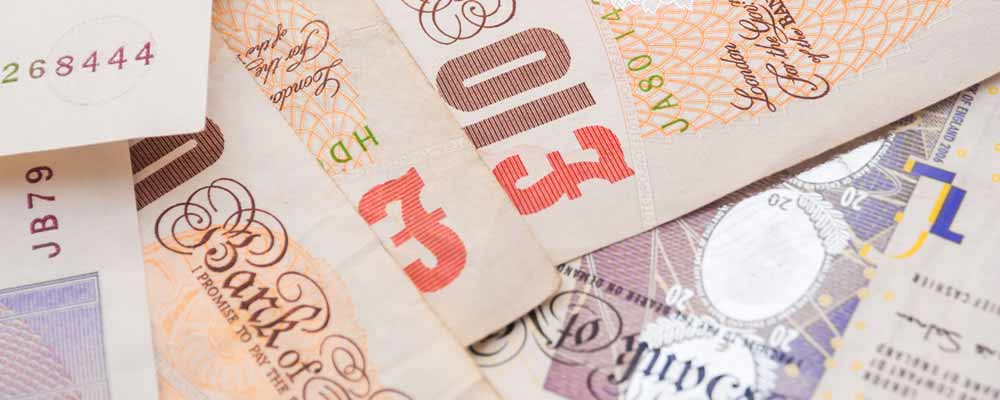With UK data generally lacking at the start of the week the Pound US Dollar exchange rate has been weighed down by heightened expectations of further Fed monetary tightening. On the other hand, the Pound Euro pairing remained volatile thanks to fresh concerns over the future of the Greek economy.
- Hopes of softer Brexit continued to support Pound – Lack of clear exit plan likely to remain hindrance to GBP exchange rates
- Mixed German producer price data failed to boost Euro – Inflationary pressure within Eurozone continued to disappoint
- Weaker US PMIs not enough to diminish Fed rate hike expectations – Markets moved to price in higher odds of 2017 interest rate hikes
- Greek debt worries forecast to boost GBP EUR exchange rate – Tensions flared after suspension of debt relief measures
As the end of the year approaches will GBP exchange rates be able to regain some more of their lost momentum?
Higher UK Government Borrowing Forecast to Dent GBP Exchange Rates
Markets have continued to speculate over the UK’s future relationship with the EU at the start of the week, lacking any fresh UK data for direction. Hopes have remained higher that the government is softening on its approach to Brexit, even though the communication from Prime Minister Theresa May remains limited. As a result the Pound (GBP) has continued to lack substantial support, remaining volatile and exposed to any abrupt shifts in investor sentiment.
Confidence in Sterling is expected to weaken further on Wednesday, with public sector net borrowing anticipated to have risen 11.6 billion Pounds in November. This would not offer particular encouragement in the outlook of the UK economy, given the already wide nature of the domestic trade deficit. However, if the level of new government borrowing proves to be more limited than expected GBP exchange rates could find a rallying point.
Greek Debt Worries Predicted to Limit Euro (EUR) Upside Potential
Despite German producer prices recovering further than expected on the year in November demand for the Euro (EUR) has remained somewhat limited. While this suggests that inflationary pressure within the Eurozone’s powerhouse economy is continuing to mount, investors were disappointed to see that price inflation had slowed on the month. With the European Central Bank (ECB) still seeming likely to maintain a dovish policy outlook in the coming year the underlying fundamentals of the Euro remain bearish.
The appeal of the single currency has also been limited by concerns surrounding Greece, after creditors suspended the tentative debt relief measures that had been agreed earlier in the month. As Prime Minister Alexis Tsipras opted to give pensioners a Christmas bonus the European Stability Mechanism (ESM) put the deal on hold, prompting a fresh conflict between the ailing Hellenic nation and its creditors. This increase in tensions suggests that the conclusion of the second review of Greece’s economy and reforms will be delayed, something which could signal a new chapter in the debt crisis saga and would weigh heavily on the Euro.
GBP USD Exchange Rate Forecast to Remain Under Pressure on Fed Rate Hike Expectations
Although the general mood towards the ‘Greenback’ (USD) remained positive the Pound US Dollar (GBP USD) exchange rate was able to recover some ground on Monday afternoon, thanks to disappointing domestic data. Both the US Services and Composite PMIs fell short of forecast, showing a weakening in economic activity on the month. Even so, the Federal Reserve is still expected to continue its monetary tightening in 2017, with this hawkish policy outlook likely to underpin the strength of the US Dollar for the foreseeable future.
As Daniel Katzive, analyst at BNP Paribas, noted:
‘With the US labour market operating close to full capacity and growth running above trend, we expect wage pressures to rise in 2017 and CPI to accelerate to a 2.2% y/y pace. Against this backdrop, we expect the Fed to deliver two rate hikes in the second half of 2017 and markets will likely price for rate hikes to continue through 2018.’
Nevertheless, with forecasts pointing towards a sharp contraction in November’s durable goods orders, the GBP USD exchange rate could still have room to push higher this week. Should the data indicate a sharp slump in consumer confidence, or any political developments shake market sentiment, then the ‘Greenback’ could soften.
Current Interbank Exchange Rates
At the time of writing, the Pound Euro (GBP EUR) exchange rate was trending narrowly in the region of 1.19, while the Pound US Dollar (GBP USD) pairing was slumped around 1.23.



